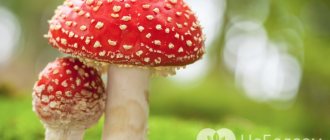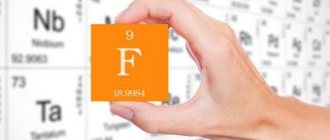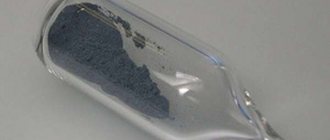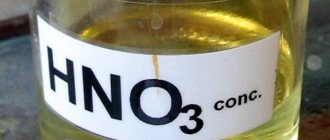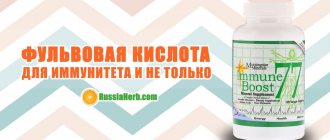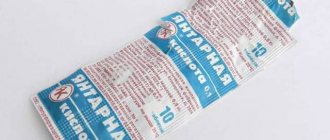Red forest ants (Formica rufa shown in the photo) are natural inhabitants of our forests. They build large nests that are visible from afar. There are tens of thousands of individuals in a family, there is a division of labor.
Defenders or soldiers behave the most aggressively. Insects of this species are considered forest orderlies; they maintain homeostasis in the ecosystem, therefore they are listed in the Red Book.
Insect bites are not dangerous; in a mass attack, significant harm can be caused, but for this the person himself must try very hard. Other species may also be classified as red ants, but this philistine attitude does not change the essence - all hymenoptera of this genus are harmless.
Red wood ants (Formica rufa)
Types of ants living in our latitudes
In the vast expanses of Russia there are quite harmless species of ants:
- House ants settle in residential buildings, their size is about 3 mm, their color is brown, they adapt well to feeding and living conditions, do not bite and are almost harmless.
- Forest ones, living in nature, up to 9 mm in size and reddish-brown in color, build structurally complex anthills and maintain a certain social hierarchy in their community.
The bite of a red ant will only cause trouble if the person has been bitten by many insects defending their anthill. In such a situation, allergies may occur, but there is no danger to life. Ants can also attack animals: for example, if they bite a dog, the consequences will be similar to the effect on the human body.
Tired of fighting pests?
Are there cockroaches, mice or other pests in your dacha or apartment? We need to fight them! They are carriers of serious diseases: salmonellosis, rabies. Many summer residents are faced with pests that destroy crops and damage plants.
In such cases, our readers recommend using the latest invention - the Pest Reject repeller.
It has the following properties:
- Gets rid of mosquitoes, cockroaches, rodents, ants, bedbugs
- Safe for children and pets
- Powered by mains, no recharging required
- There is no addictive effect in pests
- Large area of operation of the device
Read more about it here >>
Exotic species
There are several dozen dangerous species of ants in the world, living in Asia, Africa and America. The bites of these types of ants are very painful and dangerous. These insects include:
- The nomadic species, called siafu, live in Africa and South America, move in entire colonies in search of food, and are ranked among the largest ants in the world. Outwardly, they look terrifying: with a body size of 1.5 cm, the jaws of the insect grow larger than its head, and female siafus reach 5 cm during the egg-laying period. According to the testimonies of victims, ants bite very painfully, secreting poisonous enzymes, which is why they often allergic consequences occur, but no deaths have been recorded.
- The bullet ant bites even more painfully, since its secretion contains poneratoxin, which is considered one of the most poisonous in the world. According to the victims, the bite of such a “bullet” causes severe pain, comparable to a gunshot wound. Another name for it, “24 hours,” is associated with the duration of the painful condition after the bite. The size of the biting insect reaches 1.5-3 cm (females are always larger), they live in South Africa.
Interesting!
Local residents use the bites of this species of ants during male initiation rites, after which the bitten arms and legs may even be temporarily paralyzed or blackened.
- The bulldog is a small ant, but deadly, causing many deaths in the Pacific Islands every year. The danger is an acute allergic reaction to an ant bite, often leading to a state of shock.
- Red fire ants, whose bites are considered the most poisonous in the world, originally inhabited the South American continent. However, thanks to their high adaptation, they, along with ships, easily moved to Asia, Australia and North America, reaching the southern states of the United States. They are found in Asia and the Pacific Islands. The pain of a red ant bite can be compared to a burn: the insect infects with the poison solenopsin, which causes severe allergic consequences, including the death of a person from anaphylactic shock.
Knowledge about these types of insects and how to treat an ant bite is necessary for all travelers and tourists visiting exotic countries, so that the long-awaited vacation does not end in illness and tragedy.
Does the ant bite or sting?
To protect themselves, ants can both bite and sting - it all depends on their variety. Stinging ants use a sharp sting located at the end of their abdomen. They use it to pierce the skin of an enemy or victim and inject a poisonous secretion. Non-stinging insects capture and bite through the skin using mouthparts with jaws. Some species do not bite or sting, but only secrete formic acid.
Some species are included in the top 10 insects with the most painful bites - these are the red fire ant and the harvester ant, the bullet ant, and the bulldog ant. Their poison is very dangerous, so an attack on a person often ends in the death of the victim. Mostly dangerous species of these insects live in the tropics, however, in temperate latitudes you can also find painfully stinging ants - the red forest ant and the house thief ant.
Red fire ant
During the attack, a toxic substance, the alkaloid solenopsin, which has neurotoxic, hemolytic and necrotic properties, enters the victim’s body. It causes a chemical burn of tissue, similar to a thermal one. The bite site begins to burn unbearably, which is why this type of insect is called fiery.
The bite of a red ant often causes allergic reactions - redness, blistering, dizziness, vomiting, Quincke's edema and even anaphylactic shock, which can lead to death. According to statistics, about 30 people die every year from the bites of these insects.
Bulldog ants are large insects up to 45 mm long. This is a species of primitive Australian ant. Their features are large eyes, long, up to half a centimeter, jagged jaws, and an organ located on the abdomen, thanks to which these insects can make a chirping sound. Their body shape resembles wingless wasps. In addition to a powerful mouthparts, they have a strong sting.
There are about 90 varieties of such insects, the most famous being black and red. The former have developed hind limbs and move mainly by jumping, so they are also called jumping. They are capable of jumping up to 0.5 m in length. Their antennae and paws are yellow, and their head is square in shape.
Bulldog Ant
Insect venom has a protein base, like that of bees and wasps, and is therefore especially dangerous for humans. Once in the body, it often causes severe allergic reactions. A bite can lead to the development of a life-threatening condition such as anaphylactic shock. For several days after an insect attack, a person feels weak, a long-lasting severe pain occurs at the site of the bite, and sometimes the temperature rises. In the Australian state of Tasmania, more people die from bites from these insects than from attacks from sharks, wasps, snakes and spiders combined.
The bullet ant lives in the tropical rainforests of South and Central America. This is a large (up to 2.5 cm) insect of a dark brown color, whose body is covered with thin needle-like spines. It has a very strong sting and venom containing poneratoxin, a substance with a neurotoxic effect that causes paralysis and blackening of the skin in the area of the bite.
Harvester ants are granivorous insects. They feed on grains that fall from the spikelets, which is why they are called reapers. They are medium to large sized ants, dark or reddish brown in color, with strong jaws. They have a developed sting, but due to their peaceful nature they use it only for protection.
Reaper Ant Bite
House ant thief
House thief ants are small (1–3 mm) insects with a developed sting, widespread in temperate latitudes. Males and females are dark, workers are light yellow, almost transparent. Insects are omnivores - they eat what they find on the ground, gnaw planted seeds, destroy food supplies by getting into houses, which is why they are called brownies. They can be parasitic - they settle next to colonies of other ants, steal their eggs and larvae and eat them.
What happens if this small insect bites a person? Despite its small size, it bites quite painfully - first there is a sharp burning pain, then a lump or blister appears on the skin, and the affected area may swell and itch. Severe allergic reactions with a single bite occur extremely rarely, with multiple bites - much more often.
Ant bites and their consequences
In a normal bite, the ant pinches the human skin and bites using its jaw. There are some tropical species of ants that use a sting placed closer to the tail, through which they inject a toxic substance - such a bite is immediately felt in the form of severe pain and redness (see photo of an ant bite).
Ant bite
Many species of ants produce formic acid in special glands, which can be sprayed at a distance of up to 30 cm; if it gets into human eyes, it can burn the retina.
When a person is bitten by an ordinary ant, redness and mild itching occurs in this place, the symptoms disappear within 8-24 hours. If there are a lot of bites, then there may be more severe consequences (what a bite from a large number of insects looks like - see photo):
Insect bites
- severe itching and burning in areas of injury;
- general weakness, headache, vomiting;
- drop in blood pressure;
- cardiac dysfunction, tachycardia.
Allergy to bites in humans is manifested by the following symptoms:
- swelling of the limbs;
- swelling in the face and neck, difficulty breathing;
- inflammation and suppuration at the bite sites, thickening of the skin (see photo of skin lesions from an ant bite).
Consequences of bites
Are ants dangerous for humans?
If we consider ants as part of the insect ecosystem, then they are certainly useful.
They fertilize and loosen the soil, hunt pests among insects, and transfer the seeds of certain plants, promoting their reproduction. On the other hand, for humans, ants can cause not only discomfort, but also real danger. In addition, ants harm garden crops and breed aphids, which kill plants. The appearance of ants in your home is also dangerous. These insects spoil food and are capable of transmitting diseases that are dangerous to humans.
The main problems associated with the appearance of ants:
- the appearance of pathogenic bacteria and viruses in the home;
- psychological discomfort;
- bites on the body;
- food spoilage;
- failure of household appliances;
- the appearance of traces of vital activity, unsanitary conditions;
- attacks on pets.
Complications after bites
Dangerous and severe consequences of ant bites can manifest themselves in the following diseases:
- Urticaria - skin rashes that turn into voluminous pink and red spots and blisters, merging into a single whole, a burning sensation is felt, the skin itches, and the body temperature rises. In such a situation, consulting a doctor is mandatory.
- Quincke's edema is swelling of the mucous membranes and larynx, which can cause respiratory arrest: the process occurs rapidly, so urgent medical attention is required. Before the ambulance arrives, it is better to put vasoconstrictor drops into your nose and take antihistamines.
- Anaphylactic shock is a rare and dangerous type of allergic reaction of the body due to intolerance to any substance; it can be caused by the action of formic acid or toxic toxins.
Important!
Symptoms of anaphylaxis: itching spreading throughout the body; a sharp drop in temperature, pallor and cold sweat; blue lips, shortness of breath, hoarse breathing, possible loss of consciousness. If medical help is delayed, death is likely.
Prevention
It is believed that ants are inactive at night. But it is not so. If insects have settled in the house, then the owners of the home know that there will be no peace. Neither time of day nor seasonality affects pest activity. All that remains is to use traps and insecticides to destroy the uninvited guests. After disinfestation, the apartment must be thoroughly cleaned.
As for safety in nature, you should not rest next to an anthill. When traveling in southern countries, avoid contact with insects and use repellents to treat clothing. When traveling, take antiallergic drugs and external antiseptics with you.
Dear readers of the 1MedHelp website, if you still have questions on this topic, we will be happy to answer them. Leave your reviews, comments, share stories of how you experienced a similar trauma and successfully dealt with the consequences! Your life experience may be useful to other readers.
Author of the article:
| Orthopedic doctor Education: diploma in General Medicine received in 2001 at the Medical Academy named after. I. M. Sechenov. In 2003, she completed postgraduate studies in the specialty “Traumatology and Orthopedics” at the City Clinical Hospital No. 29 named after. N.E. Bauman.
Many people associate the beginning of the warm season not only with the awakening of flowers and trees, but also with the activation of insects. Cute insects often cause a lot of inconvenience, and in addition, the consequences of close contact with them can be quite dangerous for humans. So, a simple ant bite can even lead to death.
That is why it is extremely important to know how to protect yourself from such a problem and what first aid measures should be taken if the situation already occurs
First aid and treatment
First aid for an ant bite
Treatment of ant bites is carried out depending on the symptoms manifested, the main rule is not to rub the bite site, so as not to cause an infection:
- to disinfect the wound, wash it with soap and water, then put ice on it for 10-15 minutes;
- for processing, you can use alcohol solutions or vodka;
- to reduce itching and redness, the site of the ant bite can be rubbed with balm or ointments sold in pharmacies: Golden Star, Advanten, Fenistil-gel, etc.;
- In case of an allergic reaction, you must immediately take an antihistamine: Fenistil, Suprastin, Loratadine, etc.
Traditional methods are also successfully used, recommending how to treat skin lesions, with the help of which the itching will subside:
- apply a paste of soda and water or a vinegar compress with soda to the bite site;
- if you rub vinegar, the burning sensation from the ant bite subsides, you can also use lemon juice;
- using toothpaste, preferably mint, which is rubbed on the affected area;
- if the bite site itches, you can make a lotion from cold or frozen milk for 10 minutes;
- make a lotion with the addition of echinacea tincture, and you can also take it orally to reduce allergies.
In children, ant bites can often cause a more severe and rapid reaction due to thinner skin. If an ant bites a child, parents should carefully monitor him for at least a day to avoid unforeseen complications.
Danger
There is no danger from bites. The exception is people who have a high individual sensitivity to these insects.
Further scratching of wounds can cause more harm - the outer epidermis is damaged, which opens the door to infection by pathogenic microflora. The latter is typical for young children, so parents should disinfect the skin and monitor the children’s actions.
Folk remedies also help remove negative symptoms after bites
Symptoms
What an ant bite looks like depends on the type of insect. Domestic subspecies infect the skin extremely rarely, so contact leaves no trace and does not cause discomfort. The consequences of encountering tropical arthropods are more dangerous. Small red dots remain on the skin that itch and itch. They gradually go away without the use of drugs.
A person prone to allergies develops a more pronounced reaction after an ant bite:
- rashes on the body,
- headache,
- blisters on the skin,
- burning,
- pressure surges,
- arrhythmia.
An allergy to ant bites begins 15–30 minutes after contact. Red blisters are often mistaken for a mosquito attack. The consequences will be vague and unclear if the person previously drank alcohol, used drugs, or painkillers.
Important! The cause of the allergic reaction is formic acid and the alkaloid solenopsin, contained in the glands of the insect. Its composition is unique in the number of organic compounds and amino acids, so treatment with ants is actively used in medicine.
The normal reaction to an ant bite is localized hives. For fire ants, there is immediate pain, a red spot, and after a few hours an itchy pustule appears that takes days or weeks to heal. It is common for a person to experience multiple stings.
Skin damage due to a puncture by jaws or stings is accompanied by the injection of poison. The complex substance is based on formic acid, which is why painful ant bites feel like mosquito or bee attacks if the puncture causes a strong burning sensation. You can see what an ant bite looks like in the photo. More often there are paths of several small wounds from the movement of insects on the legs, arms, and lumbar region.
Main symptoms of damage:
- slight swelling at the site of the lesion - up to 5 cm;
- redness of the skin around the puncture;
- the formation of a small pustule;
- itching in the affected area.
Local ants cause a mild, less often moderate, allergic reaction. Signs of damage disappear after a day, sometimes persisting for 3-4 days. House ant bites are barely noticeable. The photo reflects pinpoint insect marks. If you scratch an area with skin punctures when you feel itching, infection of the wounds will intensify the painful reaction and lead to the formation of pustules.
Acute allergic reactions to the bites of domestic ants, black and red, are unlikely. The danger increases with multiple lesions in the mucous membranes - formic acid gets into the nose, mouth, eyes.
Common reactions to multiple stings:
- urticaria - a red scattering of blisters on the skin, often until they merge into spots;
- Quincke's edema is local swelling in the area of subcutaneous fat in the area of the ears, lips, nose, cheeks, spreading to the larynx and pharynx. Swelling of the tissues of the larynx and vocal cords poses a threat to life. Soreness and hoarseness turn into difficulty breathing. You must urgently call an ambulance or go to the nearest hospital.
The bite of a red ant or other tropical insects causes symptoms of a general allergic reaction:
- nausea;
- shortness of breath;
- headache;
- decreased blood pressure;
- frequent heartbeat.
In rare cases, anaphylaxis develops. The reason is individual intolerance to toxic components. Manifestations include dizziness, hypertensive surge, and sometimes loss of consciousness. The toxic composition of certain types of insects provokes an exacerbation. Thus, a red ant bite, like other exotic arthropods, requires medical attention.
Soft systemic
A mild systemic response involves the skin or gastrointestinal system. Occurs from less than 1% of ant bites (0.4 – 0.8%). Skin manifestations include itching, angioedema, urticaria, redness in areas away from the bite/sting. Symptoms of the gastrointestinal system:
- mild nausea;
- diarrhea;
- spasms.
A severe systemic reaction to ant venom is characterized by clinical manifestations such as:
- angioedema (especially of the larynx);
- hyperemia;
- hoarseness;
- shortness of breath, bronchospasm;
- chest pain;
- hypotension;
- dizziness;
- severe abdominal pain;
- profuse vomiting;
- spasms.
External signs
Children living in rural areas know what ant bites look like. These insects are ubiquitous, and due to their small size, they can easily be overlooked or crushed. This will be followed by an ant bite with burning pain.
A small red spot and swelling appears on the affected area. All this is accompanied by an unpleasant burning sensation. A photo of a skin lesion from an ant bite with a common reaction is presented below.
In a person with sensitive skin, prone to allergic reactions, the symptoms are more pronounced:
- a large pink spot and swelling forms around a small red spot;
- body temperature rises in affected areas;
- the burning sensation is much stronger;
- unbearable itching.
A photo of an ant bite with a severe allergic reaction is located below.
Allergic reaction to an ant bite
What the bite looks like after a few days depends on the individual characteristics of the body. In most cases, the affected area begins to itch very much the next day, and after a few days it disappears without a trace. In case of an allergic reaction, scratching with the addition of a secondary infection, the situation becomes more complicated.
The bite of a red ant is very painful. The bite of a red ant causes even more inconvenience. The largest forest ant bites the hardest. The attack by a small black relative is the least painful.
What is good about ant poison?
It turns out that ant venom, like bee venom, can bring considerable benefits. Just as bees are allowed to bite the human body in certain places, ant bites can help cure diseases such as gout, sciatica, arthrosis, atherosclerosis, varicose veins, and relieve discomfort in places of fractures and dislocations. By allowing ants to bite us in June, our immunity will be charged for the year ahead. But this does not mean that you need to climb into an anthill and wait for healing bites. Treatment with ant poison should be carried out under the supervision of a specialist.





